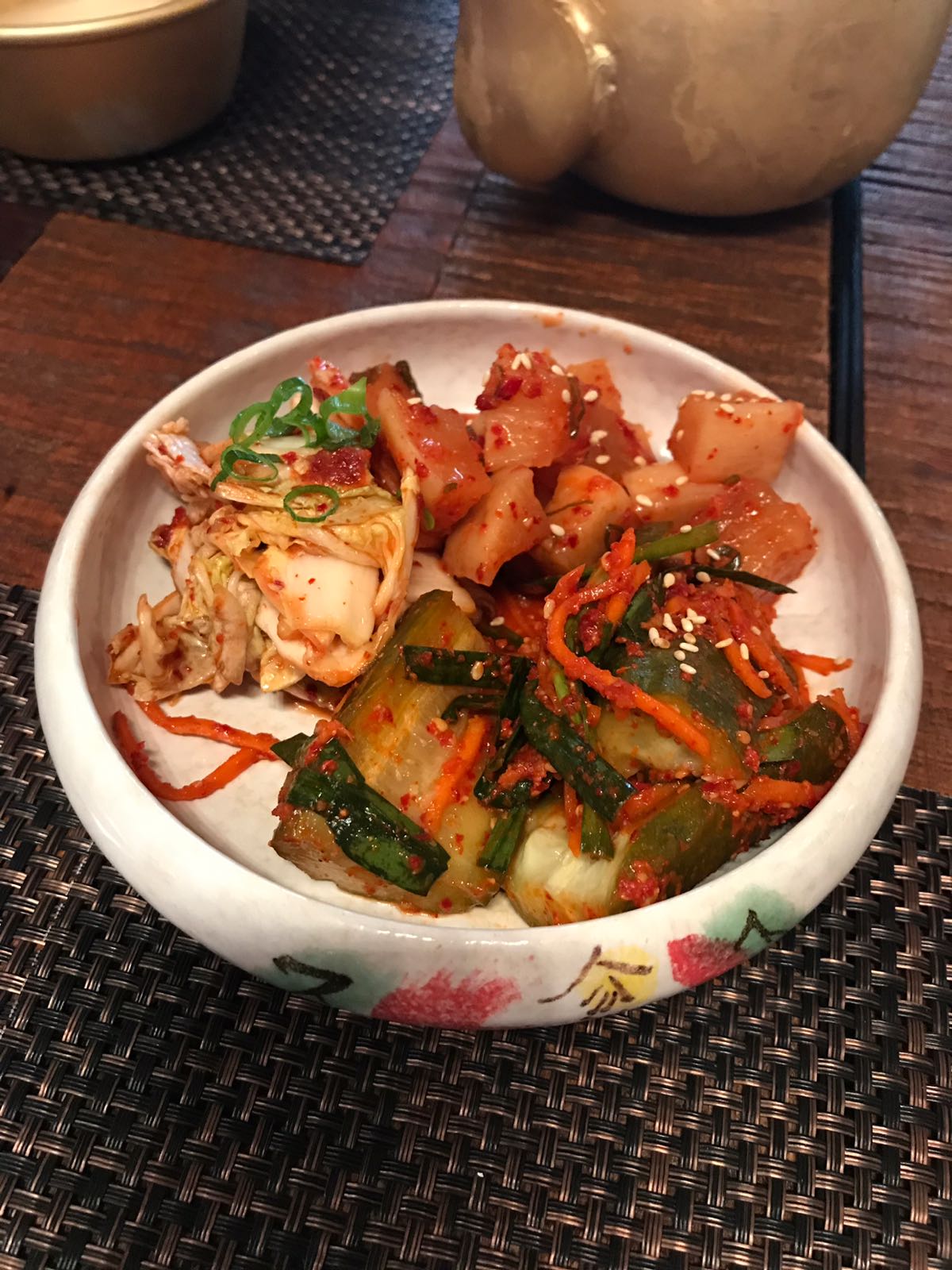Kimchi Workshop with Yong Soo Do
By Virginia Yee
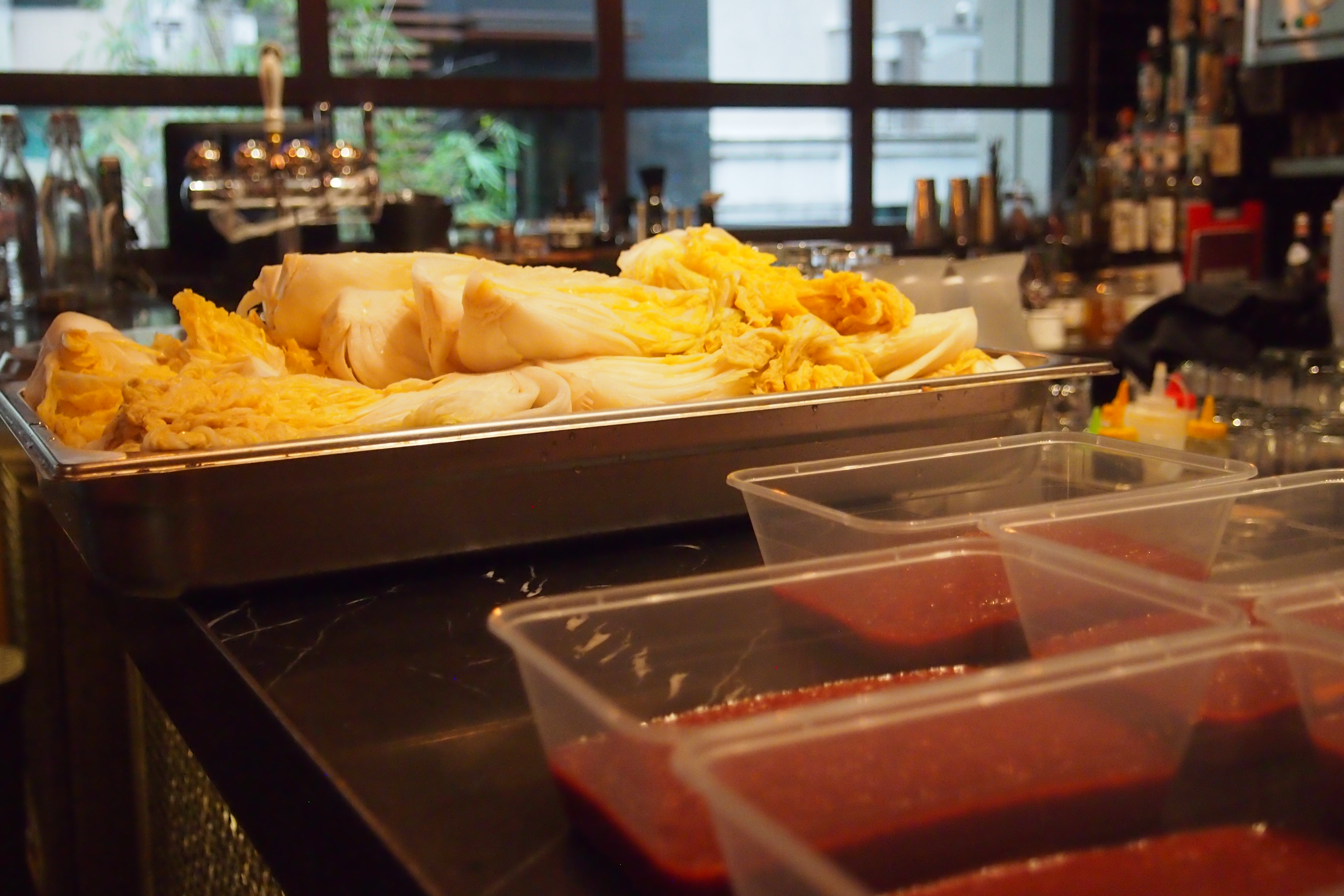
On an overcast Saturday morning on 18 November 2017, a group of around 25 Slow Food members and guests ventured to Wanchai’s Bib N Hops restaurant where chef Yong Soo Do explained the essence of making Korean kimchi. “You don’t like kimchi?”, a member overheard what I said about kimchi, obviously puzzled why I would get out of bed early on a weekend to come to this class. I have to confess I do not enjoy many of the commercial varieties which, at one whiff, would knock you to the floor. I explained that my interest is in the probiotic benefits of fermented food. Kimchi is one of the most prominent if not delicious of all fermented foods. My friend who joined me that day was also interested in the benefits of fermented foods. She teaches classes on making kefir, kombucha and fermented vegetables.

At Bib N Hops, Chef Yong organized the ingredients, apron, containers and gloves (yes, it was a cooking class) for each participant. The primary vegetable was the cabbage. He used the Napa cabbage (also known as Chinese cabbage). The cabbage was already prepped the day before since it needed to soak in the brine for 24 hours.
Two other essential ingredients in kimchi are salt and Korean chili. He cautioned us to cut and discard the “star or heart” from the cabbage center. But more importantly, he cautioned against table salt for pickling. Iodine in the salt interferes with fermentation and discolor the brine. Instead he suggested Kosher salt or the currently popular Himalayan salt. Now I have to make kimchi and use the pound of pink Himalayan salt in my cupboard.
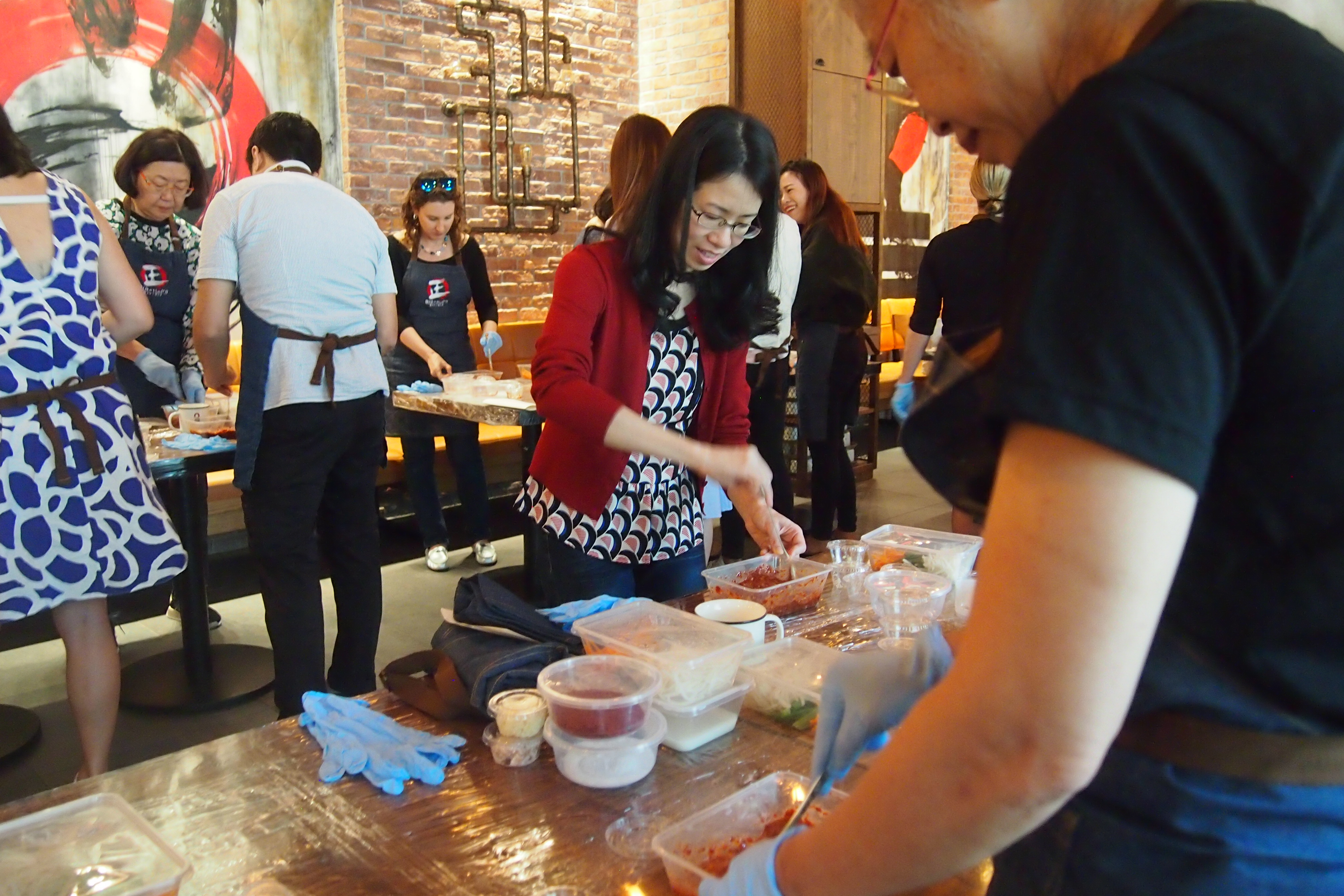
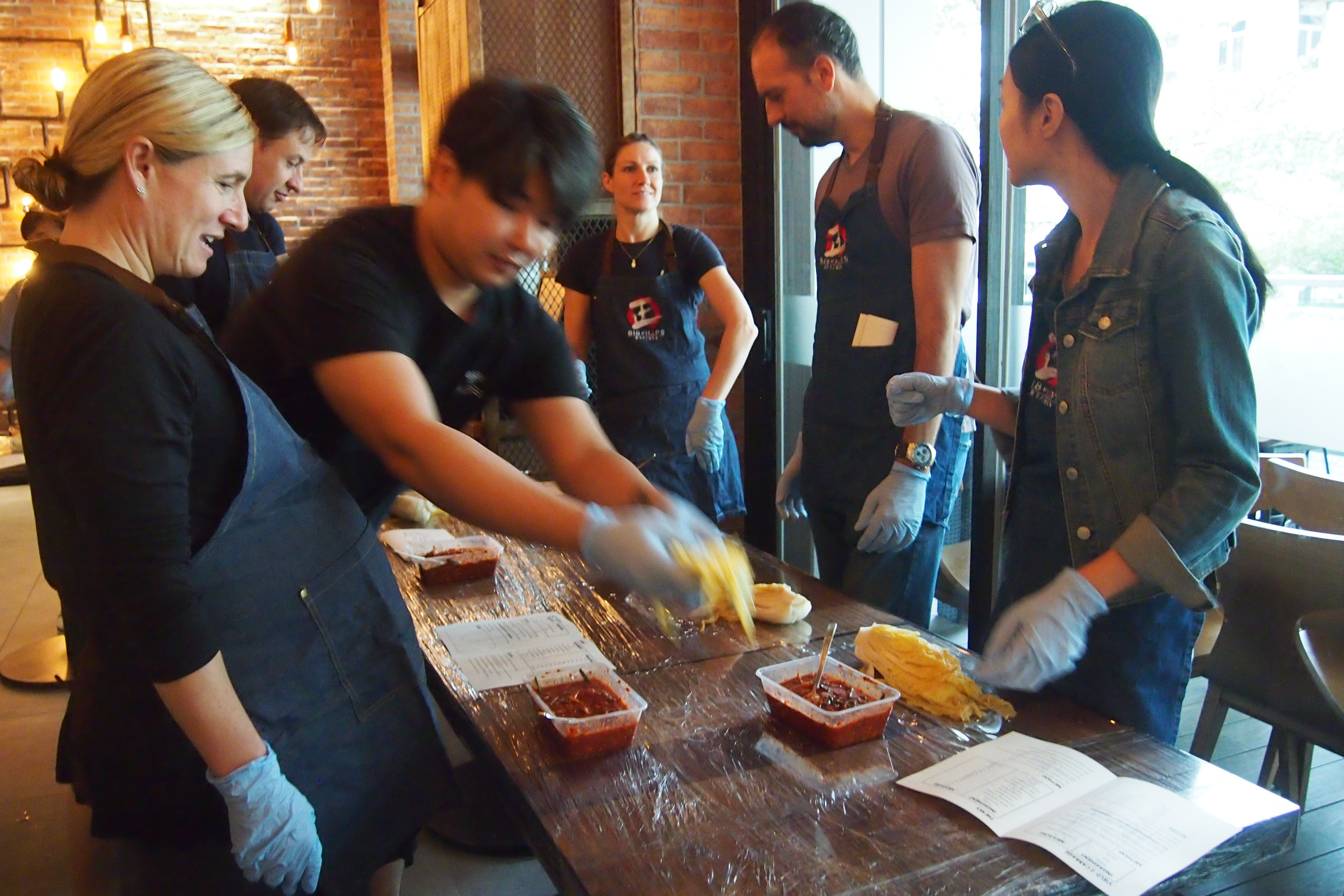
One part is the brined cabbage. The second part is the chili mix. The essential ingredient here is Gochugaru coarse chili. It is an aromatic, coarse ground Korean chili that is slightly sweet and not as hot as cayenne chili. It is available at the Korean stores in Hong Kong.
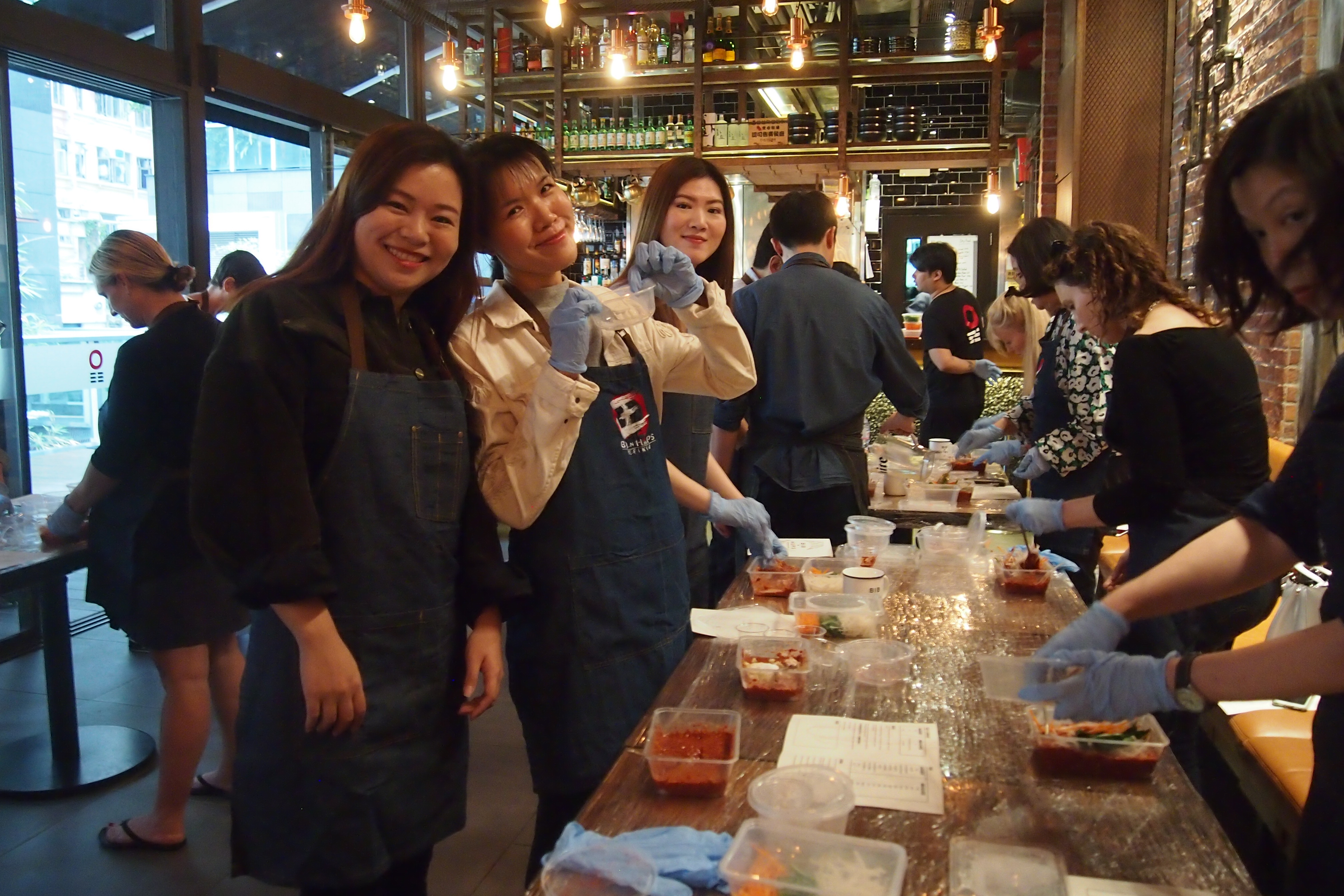
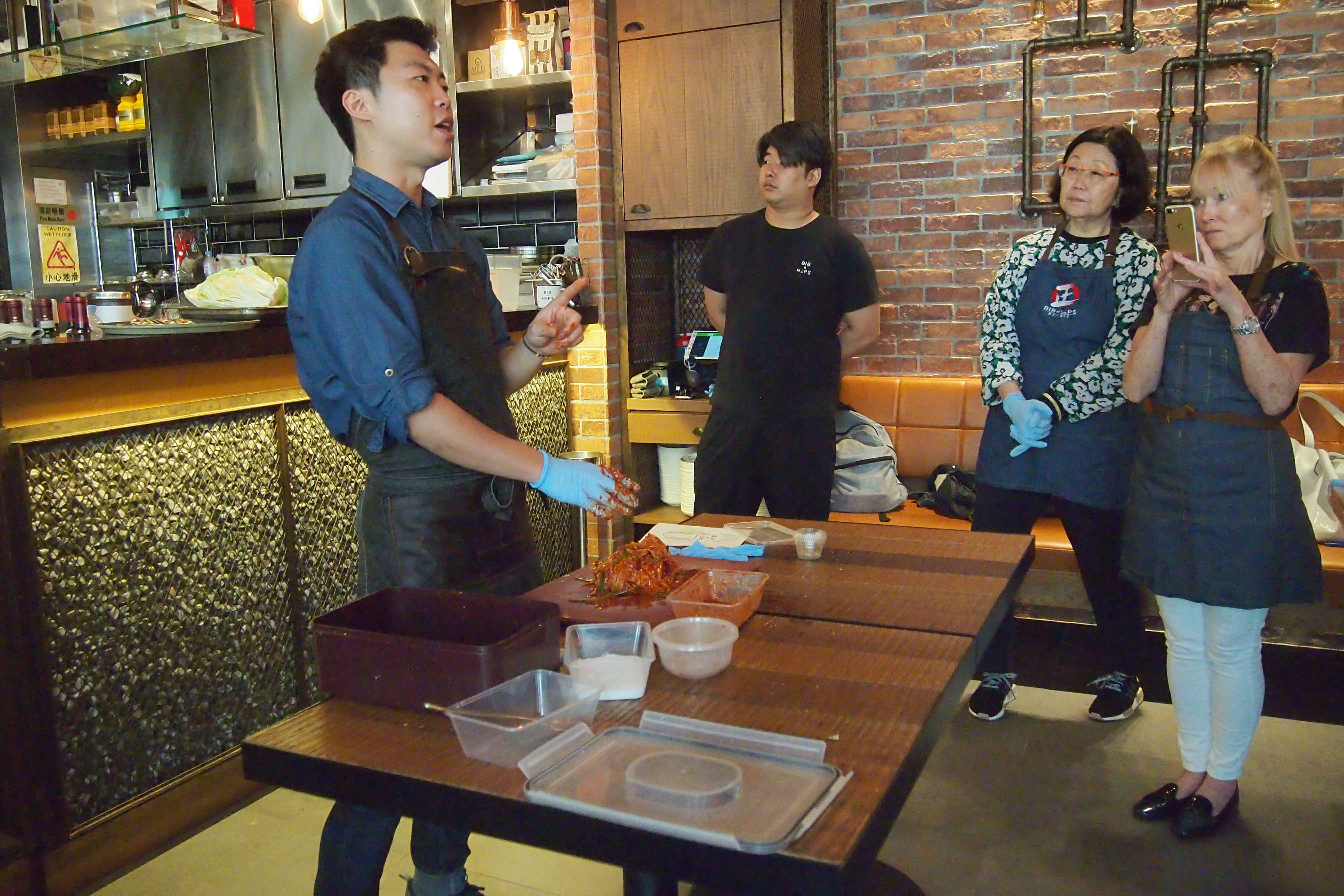
We took the large cabbage pieces and layered each leaf with the chili mix. I could not resist tasting the beautiful red chili paste. It was neither too hot nor pungent. Delicious! After stuffing the cabbage in the glass jars, they needed to rest one day in room temperature and then refrigerated for about a week. Voila, we have homemade kimchi.
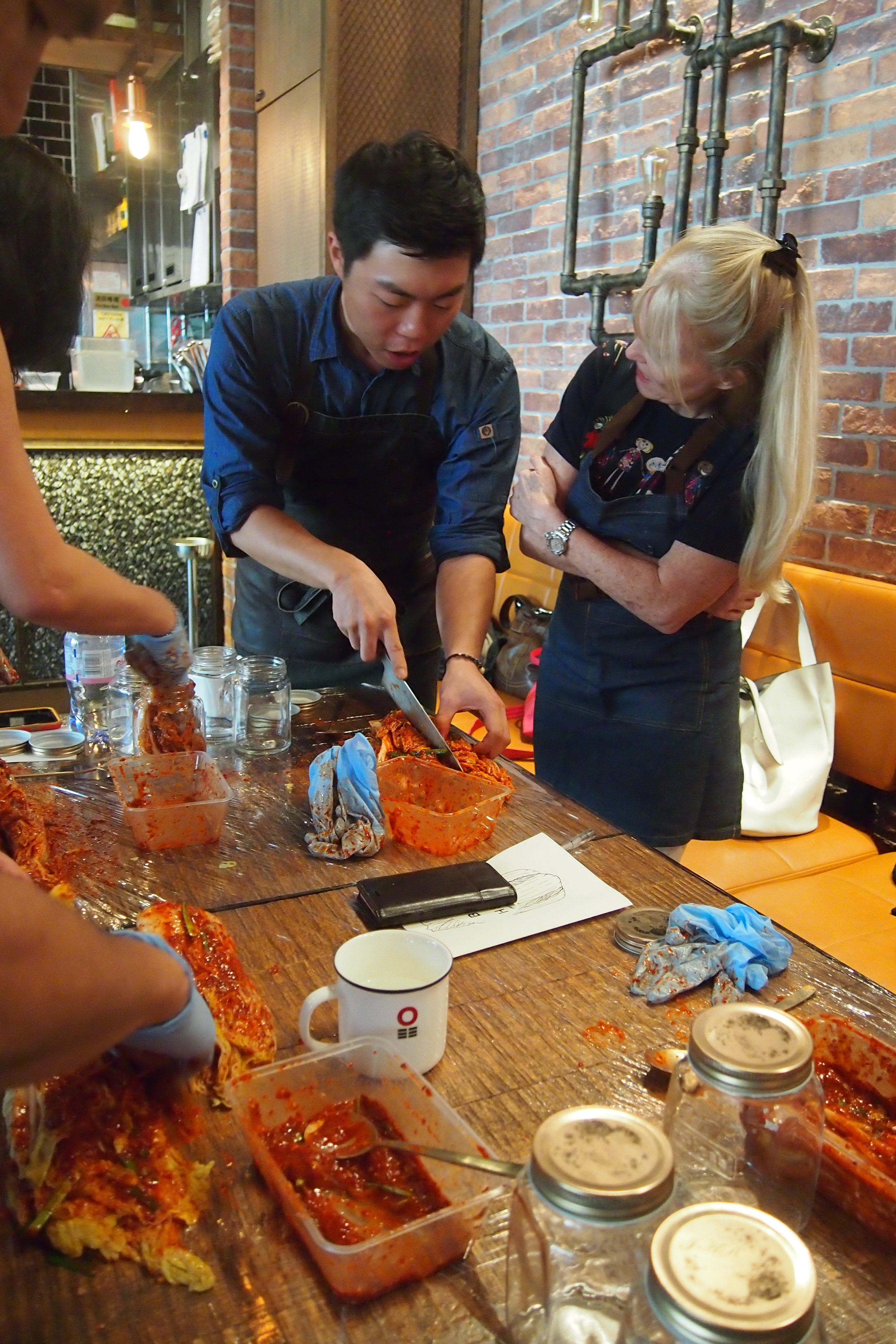
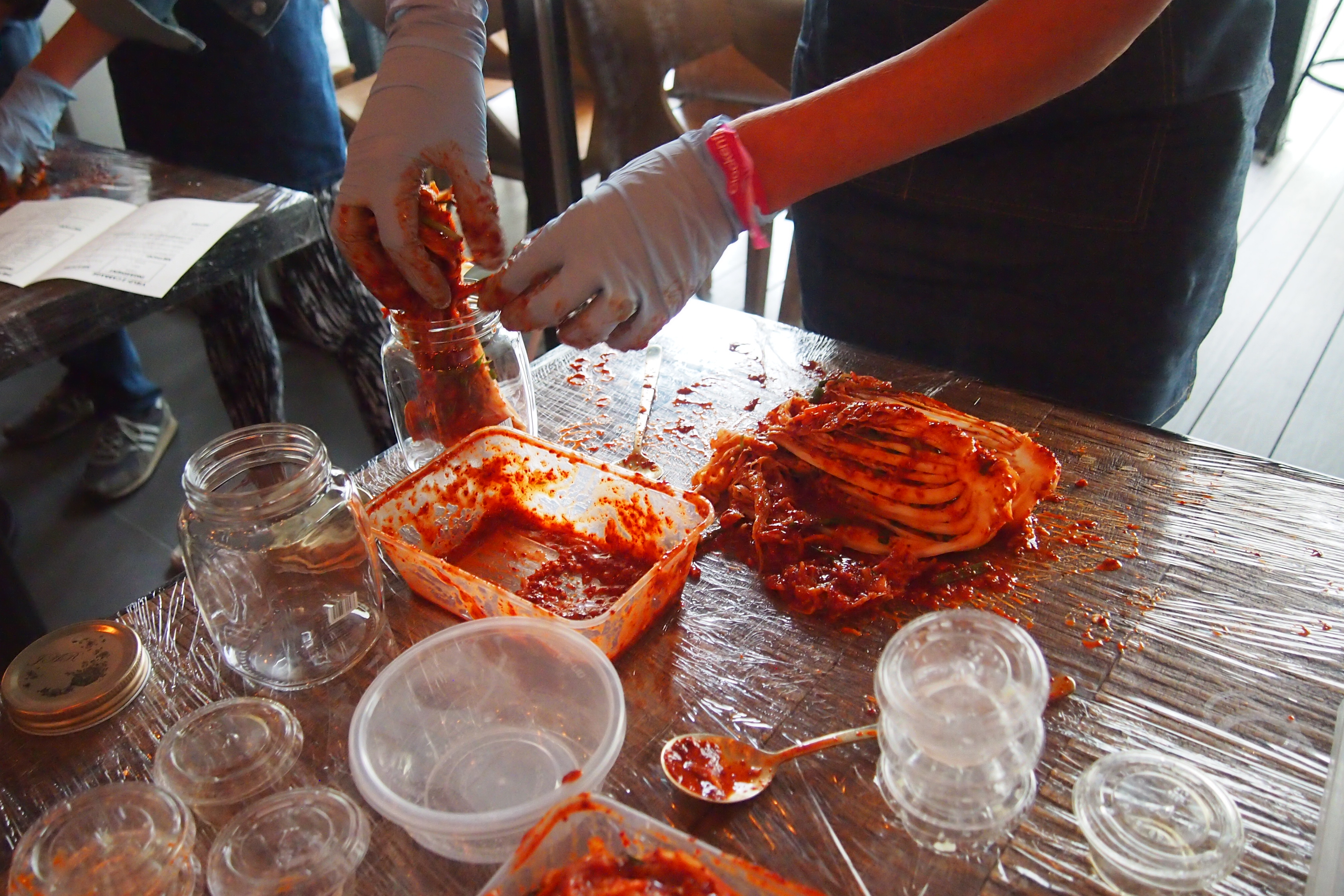
As a finale we enjoyed a lunch prepared by chef Yong and his team. The meal was very good. The menu reflects modern Korean home-style cooking, using good ingredients. Chef Yong is not only a skilled chef having worked in Canada and with some of the best chefs in Hong Kong at the Liberty group, he also subscribes to the philosophy of slow food. Chef Yong grinds mung beans for their pancakes using a traditional stone mill. Not even most of the restaurants do that in Korea!
